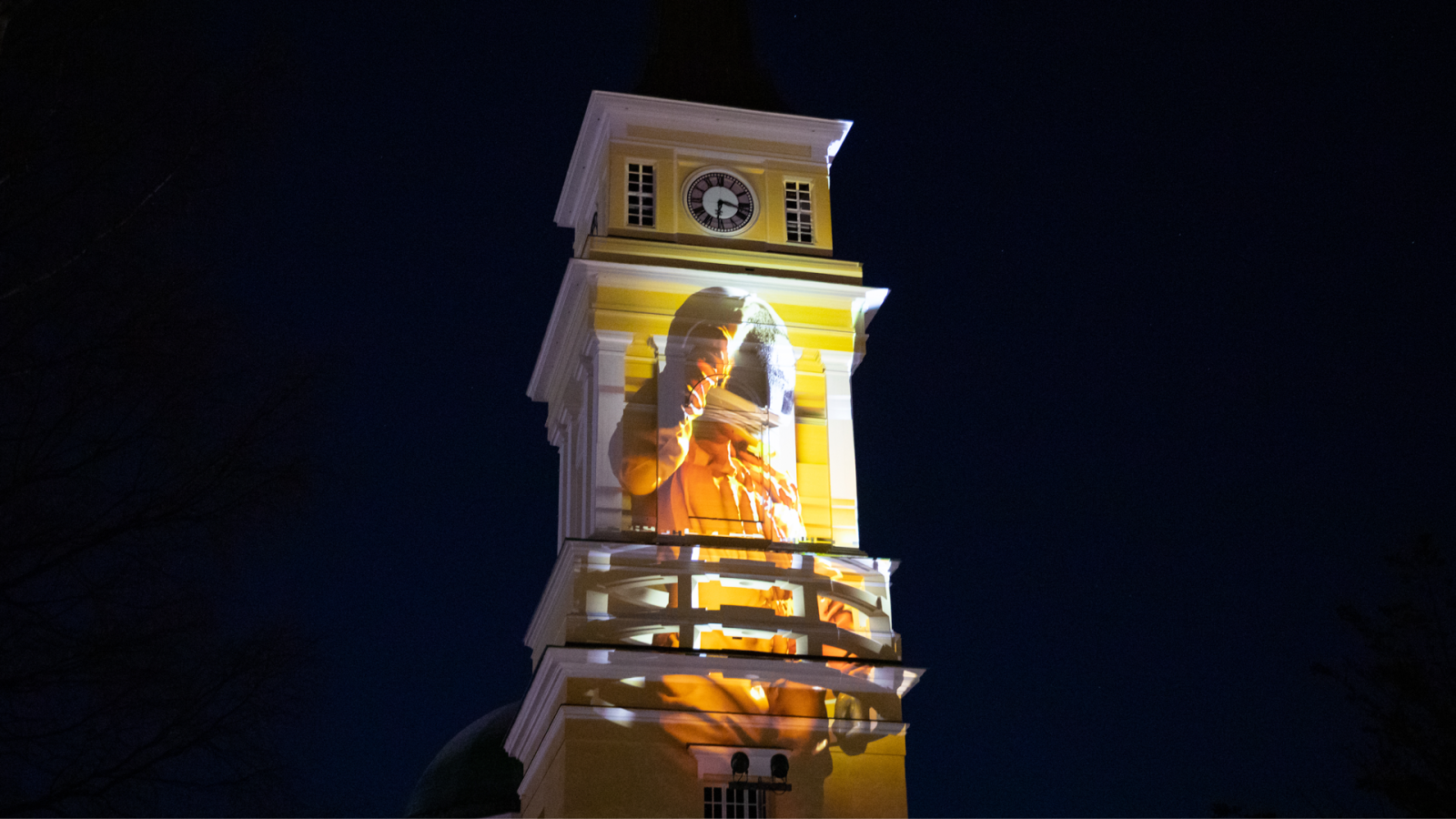Janne Ahola is a Helsinki-based designer and video artist who works for production and design agency Sun Effects.
Ahola operates with video projection, and recently he has been combining traditional painting, video, and animation in his work. His works have been presented around the world, for example in Europe, Japan, and Africa.
Ahola made his first appearance at Lumo Light Festival in 2021 with his piece The Traveller, which was projected on the facade of Oulu Cathedral. This year, Ahola returns to The Traveller’s story in the same, familiar environment.

Have you been busy since the last time you visited the Lumo Festival in Oulu?
– Workwise, the end of the year is always a bit more hectic. It is something I try to prepare myself for in the summertime, but it always manages to catch me by surprise in the autumn. Otherwise, my life is rather ordinary – trying to find the balance between my work and my family, developing new ideas, and learning new things.
This year’s installation is a sequel to The Traveller which was presented at the same location. How does it feel to return to the world of a piece that was shown two years ago?
– Coming back to the same site makes the process somehow easier but also challenging at the same time. You must try to see the setting from a slightly different perspective to avoid repetition. On the other hand, many ideas are left uncompleted, or you leave something out. This way you can continue where you left off and take things further, so it is rather special.
Usually works like these tend to be quite unique spectacles, and this is actually the first time that I get to create another installation on the same facade.
What type of technique or technology are you utilising in this piece?
– The View has been created with so-called projection mapping technique. The video, or animation in this case, is produced on a three-dimensional image of the facade that I have made, which is then positioned onto the right spot with projectors. The image of the window is positioned on the cathedral window, the door on the door, and so on. The digital version of the cathedral is placed like a cover on the cathedral, so to speak.
How did you get started with projecting video art?
– When I was younger, I used to study video editing, through which I got excited about animation and moving graphics. That is how I discovered the VJ culture and the world of video projection.
The ”SONGDO” piece by French collective AntiVJ was, and still is, the most significant piece of art for me in the so-called ”building projection” scene.
(A VJ aka video jockey is a person that plays and mixes video, in the same fashion as a DJ plays and mixes music.)
How much is your work and the artistic process affected by the shape, surface, and size of the projection’s target?
– Larger size often means several projectors and thereby a higher resolution, which results in more work or at least a slower process because producing animation in high resolution is quite slow. In my experience, it is easier to produce content on a wall that has a lot of built-in architectural details. They often give ideas about how to treat the surface.
How do you combine digital and traditional art in your installations?
– A few years ago, I was getting bored with my own work, partly because of its digital appearance, but even more with the process itself, which entails a lot of tinkering and constant tuning – the continuous image optimisation and such. The whole process was lacking the kind of fun aspect that brought me to animation in the first place.
As a result, I experimented with using drawings and paintings, something concrete, as a texture in a digital environment. There is still tinkering involved, sometimes it works and sometimes it looks horrible, but at least doing it is a lot more fun.
Let us go back to this year’s installation. The Traveller’s fearful emotions have turned into a peace of mind, and the journey takes The Traveller toward the unknown as they relinquish their last material form. What sort of a message do you wish to convey with The Traveller and The View?
– The names of both these works come from song titles on Esa Kotilainen’s album Ajatuslapsi. Perhaps the fundamental idea is that people should give some time to themselves and their own minds. Forget about what others think, concentrate on your own stuff, and just go for it. The album is the perfect soundtrack for that.
As a conclusion, you are welcome to send your greetings to Lumo Light Festival visitors. Thank you for the interview!
– Take some time viewing the works, and why not walk through the route a couple of times if you can. I believe many of the installations will yield something new each time.
Text: Jaakko Koivukangas


